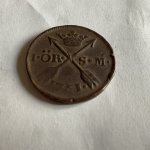tim102
Tenderfoot
- Feb 20, 2010
- 5
- 0
- Detector(s) used
- garrett gti 2500@ bounty hunter iv
- Primary Interest:
- All Treasure Hunting
I live in northeastern Indiana and have a 3 acre hay field . so I thought I would trying looking for glacial gold . ive been panning the dirt in a 35 gallon tub .ive dug a 2 1/2 foot wide by 2 1/2 down test hole . has any body ever had any luck doing this .looking for info
Amazon Forum Fav 👍
Upvote
0






